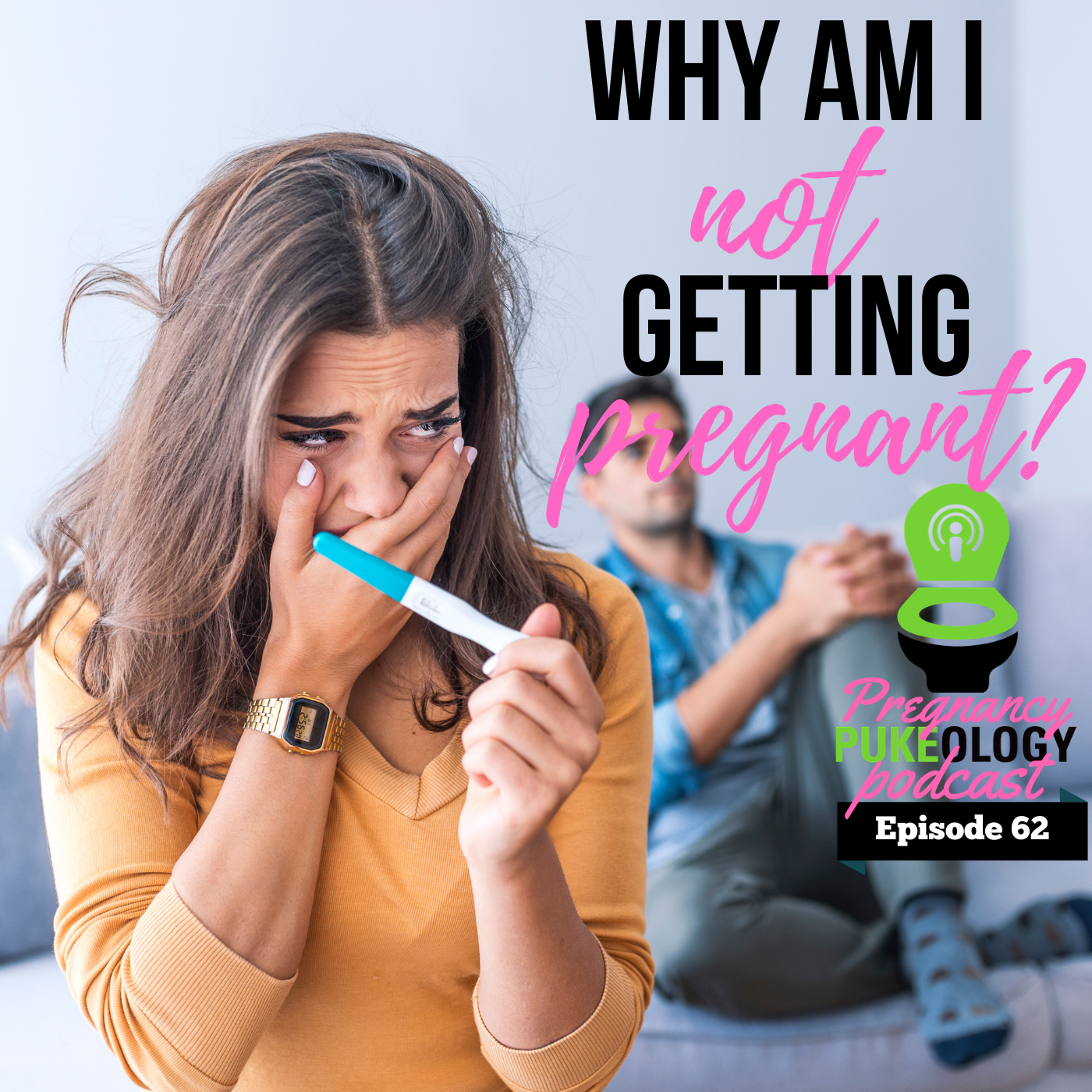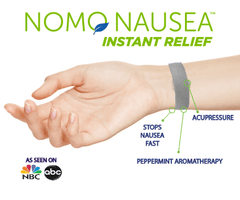
Why Am I Not Getting Pregnant?
Did you know that 12% of women aged 15 to 44 suffer from infertility? Half of them notice their infertility after only 1 year of trying. This means that 1 out of 6 couples will have infertility issues. Infertility is on the rise in the United States and is increasing at a 5-10% rate. This blog will dive into the most common possiblities as to why your not getting pregnant, ways to boost your fertility, and a fertility boosting recipe designed to get you pregnant quickly. Read on to learn more or if you need this in audible form, just click here to listen to this pregnancy podcast Pukeology where our doctor discusses all the infertility misnomers.
Why I am not pregnant after IUD removal.
An intrauterine device is one of the most typical methods most women use to prevent pregnancy, perhaps due to its ease of reversing when on want to pregnant.
While fertility returns almost immediately after removing the IUD, rarely you may get trouble getting pregnant after its removal. However, studies show that IUD does not affect a woman’s ability to conceive.
Inability to conceive after IUD removal can be due to an underlying fertility problem that might not have been present during the IUD use.
Besides, IUD can cause scarring of the walls of your uterus. Scarring is more likely to occur if you contract an infection during the IUD use. Scarring affects your ability to get pregnant, and, sadly, increase your risk of having a miscarriage.
Why am I not getting pregnant even though I am ovulating?
If you have to wonder why you are not getting pregnant even though you are ovulating, here are reasons why you may not be conceiving
1. Poor timing
You are not conceiving because you may be missing your fertility window. Having less sex can make you miss a period when you most fertile. On the other hand, overdoing it may exhaust your man’s sperm count when you need them the most.
It recommended you have regular intercourse (at least once after every three days) during your fertility window.
2. Your partner is to blame, not you.
About 2 to 3 in ten men have fertility issues. Sadly, infertility in men tends to be silent, unlike in women. Semen analysis has to be done to find out the cause of male infertility. Some of the causes of male infertility include ageing, which reduces sperm count, reduced sperm motility, and abnormal sperms’ shape.
So, if you are ovulating and have sex but you have not yet conceived, it is time you asked your partner to consult a doctor about infertility problem.
3. Endometriosis
Having endometriosis can create problems when you are trying to conceive. Usually, the uterus is lined by endometrial tissues. When these tissues are located in places other than the uterus, the condition is called endometriosis.
Endometrial tissues can be located in places such as the fallopian tubes, ovaries, and abdomen. They cause excessive menstrual bleeding, chronic pelvic pain and pain during intercourse.

Can an ovarian cyst cause infertility
Endometrial tissues that grow in the fallopian tube may cause scarring of the tubes leading to infertility. Studies show that 3 to 5 in 10 women with endometriosis get troubles when trying to conceive.
Most women with endometriosis are undiagnosed. So if you think you have this could be the cause of the problem when pregnant, tell your doctor.
4. You have other underlying health issues.
You could merely not getting pregnant because you have an underlying medical condition such as thyroid disease, diabetes, depression, sexually transmitted infection, and an autoimmune condition. These conditions are associated with infertility.
If you have any of the above conditions, you bring the concerns up with your physician. Some prescribed medication can also cause infertility. Talk to your doctor to recommend seeing alternative medications that have no impact on fertility.
5. Maybe you are approaching menopause.
Age is a well-known factor that impacts fertility. Between 15 to 35 years women are usually very fertile. However, after 35 years fertility starts to decrease and you may take longer to conceive despite ovulating and getting a regular period.
Natural ways to boost fertility
How can I boost my fertility? The most effective way are following these natural approaches to help increase fertility by affecting a woman’s mind and body. As a doctor, we always say that a woman with balanced hormones, good nutrition, optimal weight, little to no stress or stress relief habits, proper circulation, and a healthy libido are the recipes for success to have a child. Here are a few more specific ways.
- Alternative therapies including acupuncture, acupressure, meditation, and yoga
Acupressure at many different points on the body can help alleivate symptoms like nausea, migraine, and sleep problems. If you're looking for essential oil infused pressure point wristbands that work and are stylish and waterproof too. Check out these NoMo Bands.


2. Exercise helps to increase endorphins, also known as happy hormones.
Try to do low to moderate exercise 3-5 times per week for about 20-30 minutes per day. Remember to avoid over exercising because as a woman in child bearing years, you still need a little fat surrounding your reproductive organs to be fully functional.
- Supplements like taking pre-natal vitamins and minerals, phytoestrogenic, and hormone-regulating can all keep an even balanced hormone level which is needed to assist your body in getting pregnant.
- Pregnancy diet, and no I don’t mean a diet for pregnant women, but instead a diet filled with complex carbohydrates, lean protein, healthy fats, and of course adequate hydration of water. These are the secret 10 fertility boosting superfoods and why!
What to eat to boost fertility?
10 Fertility Boosting Superfoods
Foods that increase fertility
- Eggs
High levels of choline, found in eggs, help to reduce the risk of neural tubal defects of the unborn babies. Eggs are also awesome at helping you get the correct amount of protein you need!
- Whole Milk
Calcium is key in the process for conception. Research shows that a high intake of a quart of milk contains 900mg of calcium needed when trying to conceive.
Sperm Count Increase Food
- Olive Oil
Believe it or not adding olive oil, which contain good fats, could increase pregnancy rates up to 40% according to the trial at University of Southampton. Men also benefit from olive oil unsaturated fatty acids because it helps improve sperm motility too.
Foods that increase fertility in females

- Broccoli
Dark leafy greens like broccoli are high in folate, a B vitamin that has been shown to improve ovulation. And broccoli will make you horny. WHAT?!?! Leafy greens have also been linked to increasing a woman’s libido, aka sex drive.
- Almonds
Nuts like almonds are loaded in healthy monounsaturated fats that support the reproductive system plus contains vitamin E and other minerals making it a great pre-pregnancy snacking food.
- Avocado
The lining of the uterus is improved thru consumption of avocados and other sources of vitamin E.
- Oysters
Oysters can also increase a woman’s libido but what you probably don’t know is they are packed with zinc. Zinc increases the quality of good egg production.
- Black Beans
New fertility diet research shows that women should have 35% of their diet be protein to maximize egg and embryo health. Did you know that black beans have protein but you can always eat chicken, steak, shrimp and eggs.
- Salmon
Omega 3 fatty acids found in salmon and other fish help lower the chance of repeated miscarriages and endometriosis inflammatory outbreaks, increase blood flow to reproductive organs, and improve cervical mucus. And omega 3, 6, & 9 help with healthy development of any little embryo that take root into the uterus during that two week wait while it’s trying to attach to the side wall.
- Brown Rice
Brown rice is a carbohydrate that digests slowly and contains a high fiber count with a slower release, unlike sugars and fast releasing carbs. This means that brown rice will have a gradual effect on your blood sugar thus preventing a surge in insulin resistance and preserving ovulation.

Fertility Boosting Salad Recipe
If you’re looking for a way to get all 10 fertility boosting superfoods into one lunch or dinner, this is the delicious Fertility Boosting Salad Recipe you’ve been looking for. A lighter meal option that’s fresh, colorful, totally delicious, and helps boost you and your partners fertility all in one plate.
Ingredients
For the salad
- 1 pound salmon fillets 3-4 ounces each
- 1 teaspoon dried Italian seasoning
- salt and pepper to taste
- 2 teaspoons olive oil
- 4 cups romaine lettuce chopped
- 1 head of broccoli
- 1 cup cooked brown rice
- 2 hard-boiled eggs
- 1 avocado sliced
- 1/4 cup almonds
- ½ cup of cooked black beans
- 1 avocado peeled, pitted and sliced
Additional Fertility Salad Toppings
- Any other vegetables: cherry tomatoes, cucumber, onions, peppers, olives
- Fried oysters as toppings (3 cups vegetable oil, for frying
1 cup all-purpose flour
1 tablespoon cornstarch
1/2 tablespoon baking powder
10 shucked gulf oysters
For the dressing
- 1/4 cup olive oil
- 1 teaspoon Dijon mustard
- 2 tablespoons red wine vinegar
- 1 tablespoon lemon juice
- 1/4 teaspoon garlic powder
- 1/4 teaspoon onion powder
- 1/2 teaspoon dried oregano
- salt and pepper to taste
Instructions
- Season the salmon fillets with the Italian seasoning, salt and pepper.
- Heat the 2 teaspoons olive oil in a large pan over high heat.
- Add the salmon and cook for 4-6 minutes per side or until browned and cooked through.
- While the salmon is cooking, place the lettuce, tomato, cucumber, olives, red onion, feta, dill and bell pepper in a large bowl. Toss gently to combine. Arrange the avocado over the top.
- In a small bowl, whisk together all the ingredients for the dressing.
- Let the salmon cool for 5-7 minutes. Place the salmon fillets over the lettuce mixture. Drizzle the dressing over the salad, then serve with one cup of milk.
- If you’re choosing the fried oysters as toppings: In a bowl, combine the flour, cornstarch, baking powder, 1/2 teaspoon salt and 1/2 teaspoon pepper. Toss the oysters in the mixture and coat well. Fry for about 30 seconds until golden brown. Remove to paper towels and season with salt and pepper and place on top of the salad.
